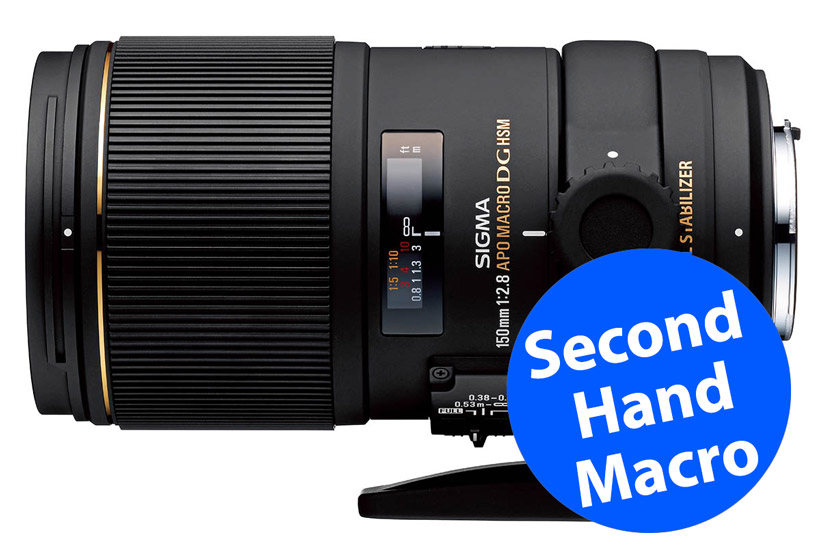Angela Nicholson and the AP team count off the best second-hand macro lenses. Here are the lenses you need to shoot close-ups on a budget.
If you want to produce close-up images of tiny subjects like plants and insects, showing them off in incredible detail, a macro lens is absolutely the way to go. These clever lenses use a special optical design to render the small world as large as possible on a camera sensor. Macro photography is technically challenging, and certainly not for everyone, but once you get the hang of it, you can make some spectacular images.
In macro, the lens is a much more important consideration than the camera. Pretty much any interchangeable-lens camera can shoot a macro image, but not all lenses can. So how do you go about finding the right optic for your close-up shots?
How to choose the best second-hand macro lenses
When you’re buying a second-hand macro lens, it’s always worth going for a reputable dealer. Not only do you get the reassurance that the item has been checked over by a professional, but many will also offer a warranty in case any problems do come up (3-6 months tends to be normal, though some will let you pay for longer). Here is a list of trusted second-hand gear dealers that we would unhesitatingly recommend:
- Camera World
- Clifton Cameras
- London Camera Exchange
- Park Cameras
- Wex Photo Video
- Grays of Westminster (Nikon only)
- Camera Jungle
- MPB.com
- Adorama (USA)
- B&H Photo Video (USA)
We’ve scoured all the major dealers to find the best macro lenses at the best prices. The majority of the ones you’ll see on this list are going to be at least a few years old – this is key when buying second-hand, as the lens will likely be more significantly discounted than a newer one would be.
A good thing about macro lenses is that you don’t need a lot of the features of newer lenses anyway, so buying one that’s a few generations old can make economical sense. Stabilisation is a big feature on new lenses, but as macro shooters are usually working on tripods, it doesn’t tend to be necessary (and in some situations can even compromise sharpness). Fast autofocus is also less of priority in macro shooting, as you’ll likely be fine-tuning the focus manually. With that said, having a focusing motor can be useful as it means the lens won’t physically extend while focusing. Not essential, but potentially handy when working at short distances.
Speaking of which, the minimum working distance is a big factor when it comes to macro shooting. You might assume that the shorter the distance, the better, but this isn’t necessarily the case. If the camera is required to be too close to the subject then it can block out the light and cast unsightly shadows, which isn’t necessarily ruinous, but will require extra planning and a potential workaround. A minimum focusing distance of 30cm or so is good to shoot for.
When we talk about the minimum working distance, what we mean is the distance at which the subject is replicated at a 1:1 ratio (meaning life-size) on the sensor. Not all lenses can do this – ones that can are known as “true” macro lenses. If you’re serious about macro, lenses with a magnification of 1x or greater are the way to go, but with that said, it’s not absolutely essential. We’ve included some lenses with lesser magnification ratios on this list, and they will absolutely get the job done.
So without further ado, here’s our guide to the best second-hand macro lenses:
Canon EF 100mm f/2.8 USM Macro
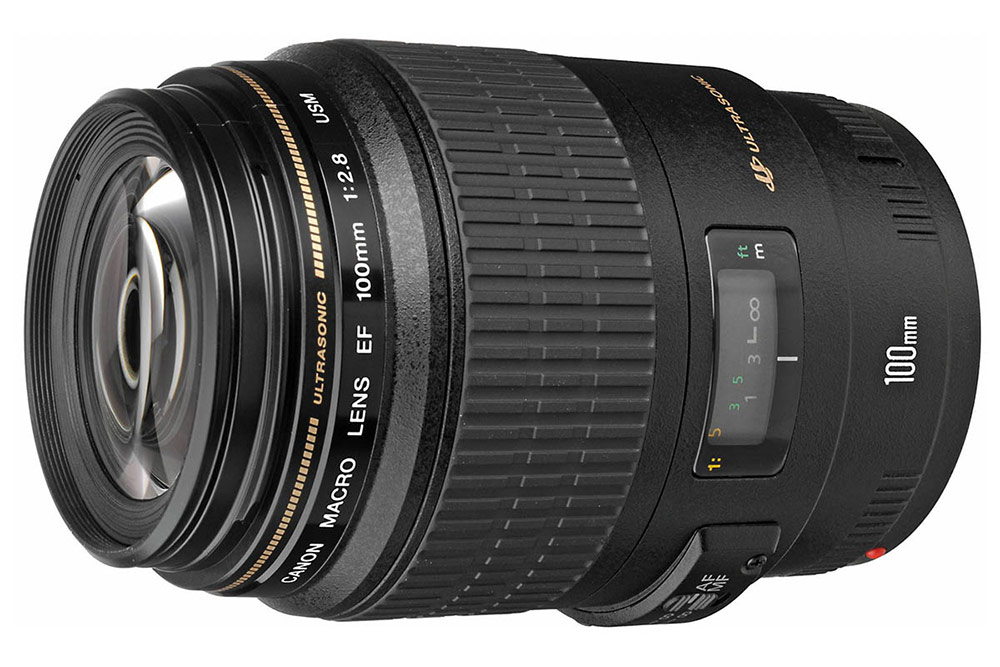
Canon EF 100mm f/2.8 USM Macro
At a glance:
- Mount: Canon EF
- Max magnification: 1x
- Minimum focus distance: 31cm
- Weight: 600g
- Second-hand price: £319 / $448
This popular lens dates from early 2000 and is super-sharp but lacks the stabilisation seen in the more expensive EF 100mm f/2.8L Macro IS USM (£669), so it’s best-suited to use on a tripod. As it has the Canon EF mount it’s designed for use on full-frame Canon DSLRs, but it can also be used on APS-C format Canon DSLRs, or mirrorless cameras with the appropriate adapter.
It gives life-size reproduction (1x magnification) at the closest focusing distance of 31cm, which translates to a distance of around 15cm between the subject and the lens. This makes it ideal for photographing a wide range of subjects including small bugs and animals. That working distance also means you should have room to use artificial light if necessary.
Pros:
- Impressive sharpness
- Flexible working distance
Cons:
- No stabiliser
For more great Canon EF lenses, check out our guide to the best Canon EF mount lenses.
Fujifilm XF 60mm f/2.4 R LM OIS WR Macro
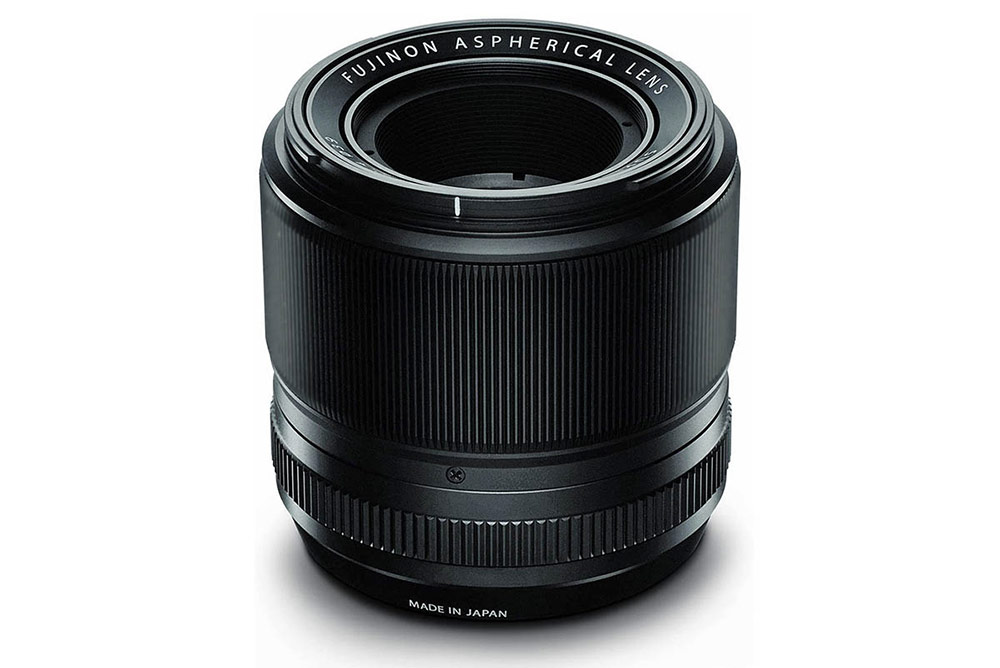
Fujifilm XF 60mm f/2.4 R LM OIS WR Macro
At a glance:
- Mount: Fujifilm X
- Max magnification: 0.5x
- Minimum focus distance: 26.7cm
- Weight: 215g
- Second-hand price: £305 / $569
This compact and lightweight (215g) metal-barrelled lens, complete with aperture and manual focus rings, is made up of 10 elements arranged in 8 groups and has a focal length equivalent to 90mm on Fujifilm’s X-series APS-C format mirrorless cameras.
At its closest focusing point, 26.7cm, it captures subjects at half-life-size, so if you want life-size, you’ll need to use an extension tube or consider the Fujinon XF 80mm f/2.8 RLM OIS WR Macro, which can be found in excellent condition for around £880. The XF 60mm f/2.4 Macro is a great performer but flare can be an issue with bright backgrounds and it’s worth keeping in mind that it extends by a couple of centimetres or so at its closest focusing point.
Pros:
- Nicely balanced
- Very good sharpness and quality
Cons:
- Not 1:1 life size
- Some flare issues
Nikon Nikkor AF 60mm f/2.8D Micro
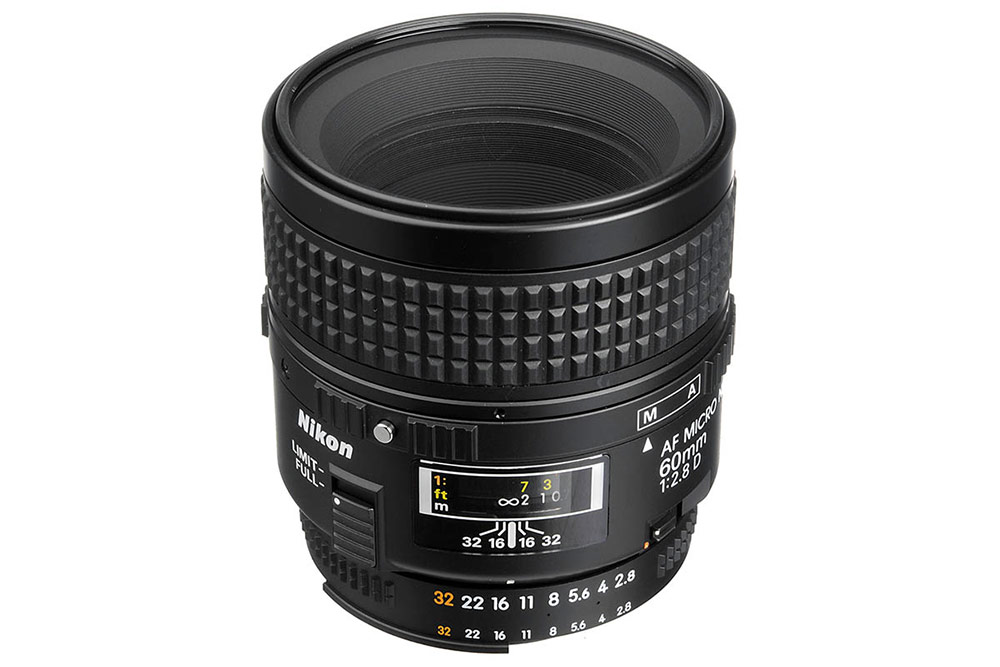
Nikon Nikkor AF 60mm f/2.8D Micro
At a glance:
- Mount: Nikon F
- Max magnification: 1x
- Minimum focus distance: 22.2cm
- Weight: 439g
- Second-hand price: £164 / $269
This attractively-priced lens has been around since the 1990s and is suitable for use on full-frame (FX) or APS-C (DX) format Nikon DSLRs, or Nikon Z-series mirrorless camera via an adapter. However, it doesn’t have a focus motor which means that there’s no autofocusing with entry-level cameras such as the D3000 and D5000-series.
The focusing can also be rather slow at close quarters (the nearest focusing point is 22.2cm), so it’s likely that you’ll want to focus manually with other cameras as well, anyway. Along with the manual focus ring, there’s an aperture ring, with settings running from f/2.8 to f/32, which is an especially nice feature on a macro lens. We’d recommend closing down to around f/5.6 or smaller to get the sharpest results.
Pros:
- Very cheap
- Tactile aperture ring
- Close focusing distance
Cons:
- Autofocus only works on some cameras..
- … and can be slow
Nikon Nikkor AF-S 105mm f/2.8G IF-ED VR Micro
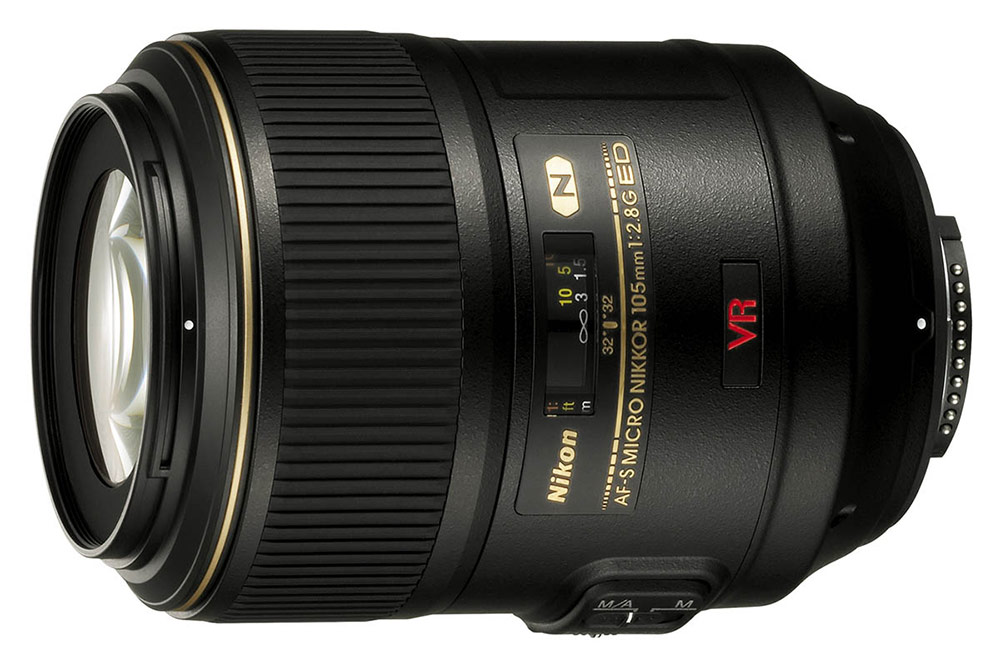
Nikon Nikkor AF-S 105mm f/2.8G IF-ED VR Micro
At a glance:
- Mount: Nikon F
- Max magnification: 1x
- Minimum focus distance: 31.4cm
- Weight: 750g
- Second-hand price: £434 / $699
Although it dates from 2006, this is Nikon’s most recent 105mm macro lens with the F-mount, which means you get a nice collection of features including lens-based stabilisation (giving up to 3EV shutter speed compensation) and a Silent Wave Motor autofocus system that works internally. There’s also a manual override for the AF system, which is helpful when you want to place to focus very precisely on a small subject.
The closest focusing distance is 31.4cm, which gives you a nice working distance while still delivering life-size reproduction. In addition, the 14-elements, 12-group construction features one ED (extra low dispersion) element and elements with Nano Crystal Coat to ensure high-quality results. The move towards mirrorless cameras means that this lens is widely available second-hand, but many have been heavily used.
Pros:
- High-quality construction
- SWM focus with manual override
- Useful working distance
Cons:
- One of the pricier lenses
Olympus M.Zuiko Digital ED 60mm f/2.8 Macro
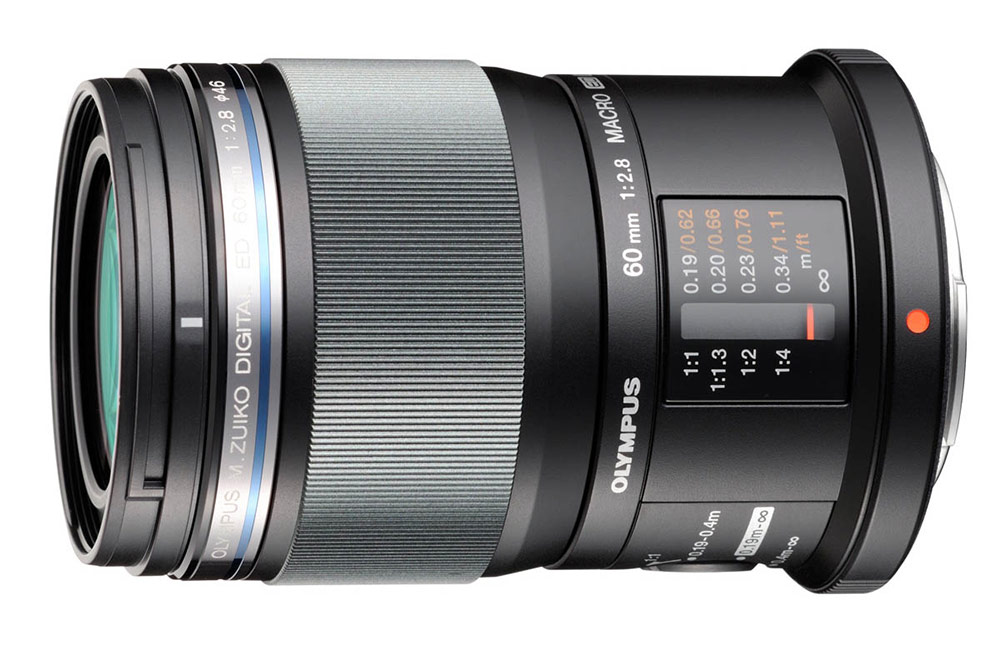
Olympus M.Zuiko Digital ED 60mm f/2.8 Macro
At a glance:
- Mount: Micro Four Thirds
- Max magnification: 1x
- Minimum focus distance: 19cm
- Weight: 186g
- Second-hand price: £359 / $365
This dust and splash-proof lens for Micro Four Thirds cameras has an equivalent focal length of 120mm and is wonderfully small at just 82mm long and 56mm in diameter. It also only weighs 186g, so you won’t mind slipping it in your bag just in case you come across any macro subjects. Its image quality is also uncompromised by its small size and the focusing is swift and silent.
Along with a focus distance scale, there’s a handy focus limiter switch. This can be set 0.19m-0.4m, 0.19m–infinity or 0.4m–infinity, or flicked round to the 1:1 point to take the focus to its minimum focus point of 19cm at which it delivers 1:1 reproduction. When scaled to full-frame, this is equivalent to 2x life-size magnification.
Pros:
- Weatherproof
- Very portable
- Excellent image quality
Cons:
- Not many! This is a great lens.
Olympus M.Zuiko ED 30mm f/3.5 Macro
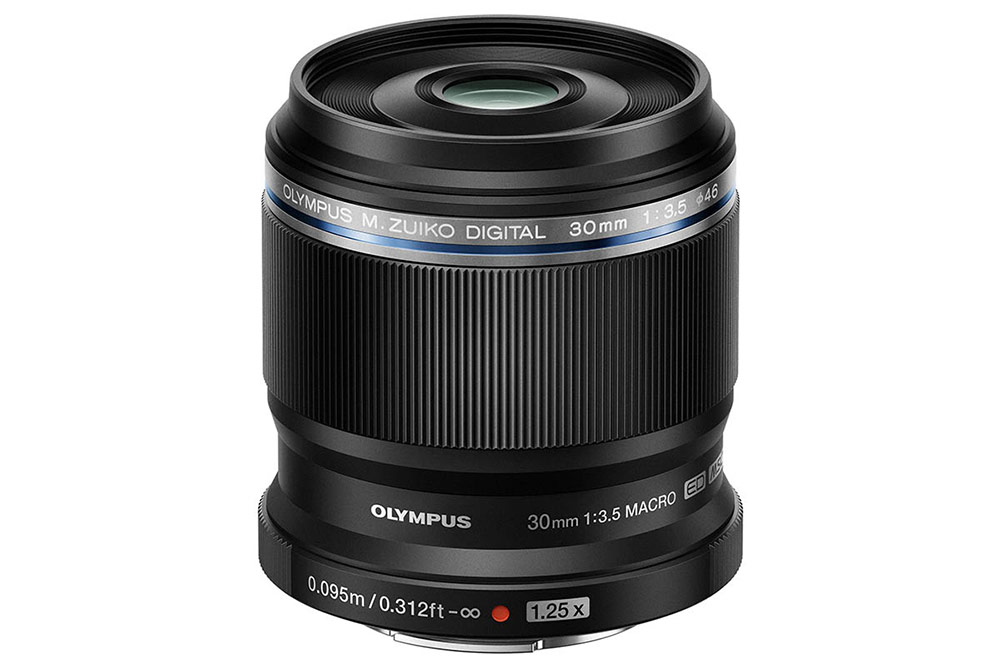
Olympus M.Zuiko ED 30mm f/3.5 Macro
At a glance:
- Mount: Micro Four Thirds
- Max magnification: 1.25x (2.5x full-frame equivalent)
- Minimum focus distance: 9.5cm
- Weight: 128g
- Second-hand price: £144
Like the Olympus 60mm f/2.8 Macro, the M.Zuiko ED 30mm f/3.5 Macro still features in the OM Digital Solutions lens line-up and it offers the full-frame focal length equivalent of 60mm. At 60mm in length and 57mm in diameter, it’s even smaller than the 60mm lens and it weighs just 128g, making it even more portable. It also offers a maximum magnification of 1.25x, which is equivalent to 2.5x on a full-frame camera. However, this requires a focusing distance of just 9.5cm, giving a working distance of just 14mm. That’s very tight and likely to mean that the subject is in the shadow of the camera and lens in many situations. The 30mm f/3.5 Macro also lacks the distance scale, focus limiter and weather-proofing of the 60mm f/2.8 Macro, but it’s roughly half the price.
Pros:
- Incredibly dinky
- Very, very cheap
Cons:
- Restrictive working distance
- No weatherproofing
Leica DG Macro-Elmarit 45mm f/2.8 ASPH Mega OIS

Leica DG Macro-Elmarit 45mm f/2.8 ASPH Mega OIS
At a glance:
- Mount: Micro Four Thirds
- Max magnification: 1x (2x full-frame equivalent)
- Minimum focus distance: 15cm
- Weight: 225g
- Second-hand price: £349 / $558
At 62.5mm in length and 63mm in diameter, the Panasonic Leica DG Macro-Elmarit 45mm f/2.8 ASPH Mega OIS is another dinky little macro lens for Micro Four Thirds cameras. It offers a 90mm equivalent focal length and has minimum focus distance of 15cm for life-size reproduction, which is more usable than the Olympus 30mm lens’s minimum distance. And of course when this is scaled to match full-frame, it equates to 2x life-size preproduction.
Constructed with approval from Leica, the legendary optics manufacturer, this lens has 14 elements in 10 groups, with 1 aspherical element and 1 ED element, which enables it to deliver impressively sharp results even wide-open. Panasonic’s Optical Image Stabilizer is also onboard, but as usual, this is of limited use for macro shooting.
Pros:
- Excellent sharpness
- Pleasingly small
Cons:
- Commands a higher price
For more great Micro Four Thirds lenses, check out our guide to the best Micro Four Thirds lenses.
Pentax D-FA 100mm f/2.8 SMC WR Macro
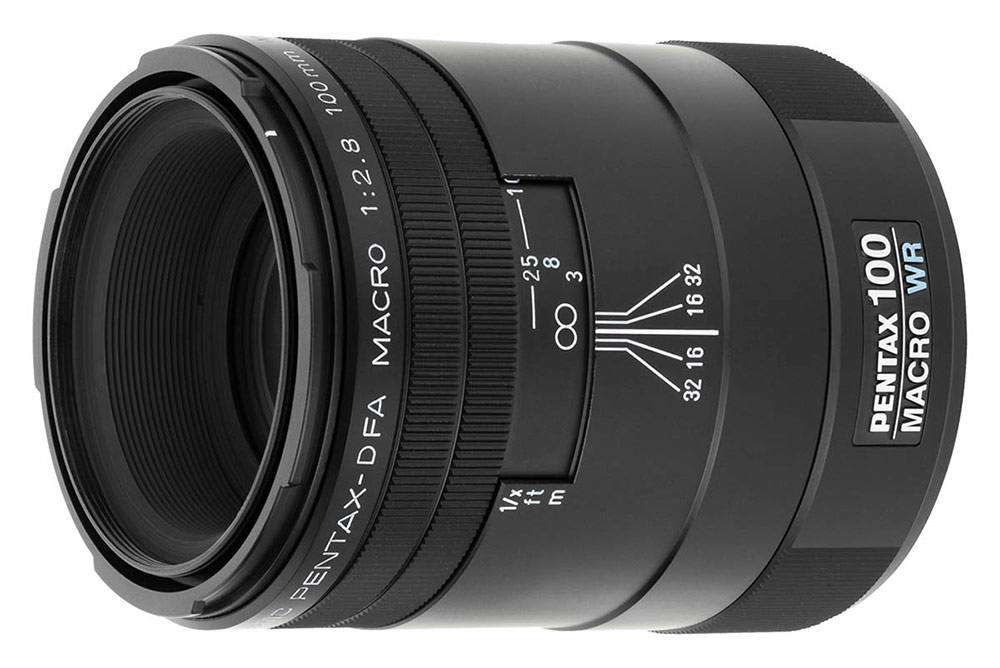
Pentax D-FA 100mm f/2.8 SMC WR Macro
At a glance:
- Mount: Pentax K
- Max magnification: 1x
- Minimum focus distance: 30cm
- Weight: 340g
- Second-hand price: £299 / $348
Optically, this lens dates from 2004 but it was revamped with weather sealing in its aluminium barrel and a rejigged mechanical construction in 2009. It has Pentax’s KAF lens mount and it’s designed for use on full-frame or APS-C format Pentax DSLRs. At just 8.05cm long the D-FA 100mm f/2.8 SMC WR Macro is fairly compact for its focal length and it weighs only 340g, but the focusing isn’t internal so the lens extends during use and the manual focus ring rotates when the autofocus system is in operation. However, the Quick Shift Focus system enables the manual focus ring to be used at any time to tweak the focus. At the closest focusing point, 30.3cm, the working distance between the subject and the lens is just 13cm but there’s 1:1 magnification and the sharpness is very good.
Pros:
- Useful Quick Shift Focus
- Solid, weather-sealed construction
- Compact and portable
Cons:
- Moves and extends during use
Samyang 100mm f/2.8 ED UMC Macro
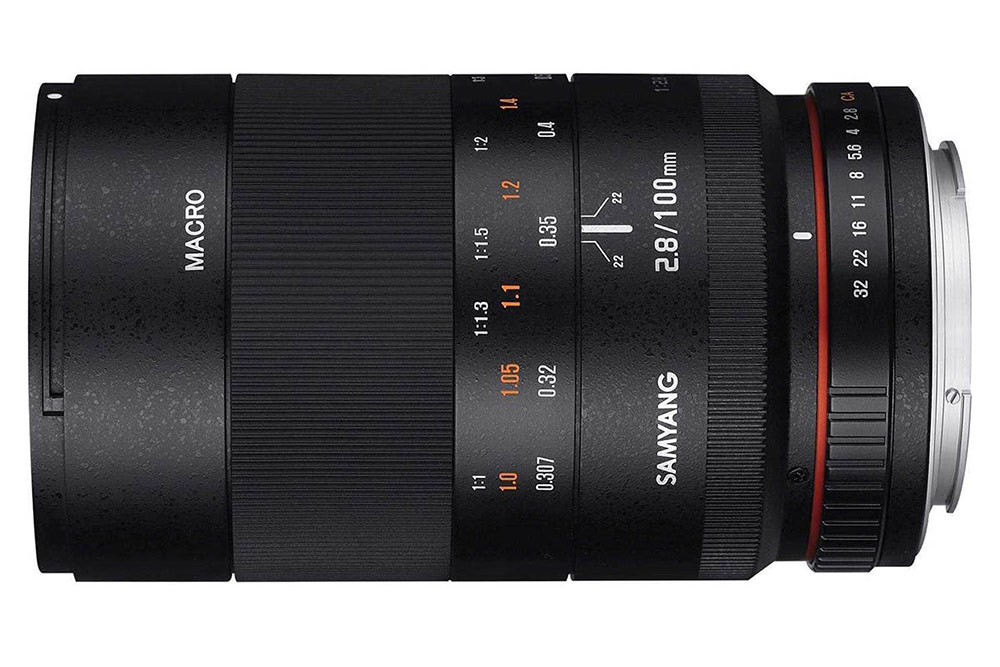
Samyang 100mm f/2.8 ED UMC Macro
At a glance:
- Mount: Canon EF, Canon EF-M, Fujifilm X, Nikon F, Pentax K, Sony A, Sony E
- Max magnification: 1x
- Minimum focus distance: 30cm
- Weight: 705-730g (mount-dependent)
- Second-hand price: £234 / $406
Samyang makes this aluminium-barrelled lens in a wide range of mounts including Canon EF, Canon EF-M, Fujifilm X, Micro Four Thirds, Nikon F, Pentax K, Sony A and Sony E, which means it produces an image circle that covers a full-frame sensor. It’s manual focus only and there’s no electronic communication between the lens and camera. The aperture must be set via the ring on the barrel which is marked in whole stops from f/2.8 to f/32. The closest focus point is 30cm from the sensor, giving a nice working distance when shooting subjects with 1x magnification. If you can accept the manual focus-only approach you’ll be rewarded with high levels of sharpness at the centre of the frame with the corners improving when the aperture is closed to f/5.6-f/11.
Pros:
- Huge range of mount options
- Good working distance
- Excellent central sharpness
Cons:
- Manual focus only
Sigma 105mm f/2.8 EX DG Macro

Sigma 105mm f/2.8 EX DG Macro
At a glance:
- Mount: Canon EF, Nikon F, Pentax K, Sigma SA, Sony A
- Max magnification: 1x
- Minimum focus distance: 31cm
- Weight: 460g
- Second-hand price: £179 / $259
The Sigma 105mm f/2.8 EX DG Macro was launched in September 2004, six and half years before the still-current Sigma 105mm f/2.8 EX DG Macro HSM came along. While it can still be used with film cameras, the 105mm f/2.8 EX DG Macro was optimised for use on digital cameras and is available with Canon EF, Nikon F, Pentax K, Sigma SA and Konica Minolta (Sony A) mounts.
Although the front element doesn’t rotate during focusing, the Sigma 105mm f/2.8 EX DG Macro extends by a few centimetres in use, which means you need to be careful to not position the lens too close to a subject. The lens uses a push-pull mechanism two switch between automatic and manual focusing and there’s a separate focus scale for each. The minimum focus distance is 31.2cm at which the magnification ratio is 1:1.
Pros:
- Very good value for money
- Good working distance
Cons:
- Physically extends in use
Sigma 150mm f/2.8 EX DG OS HSM Macro
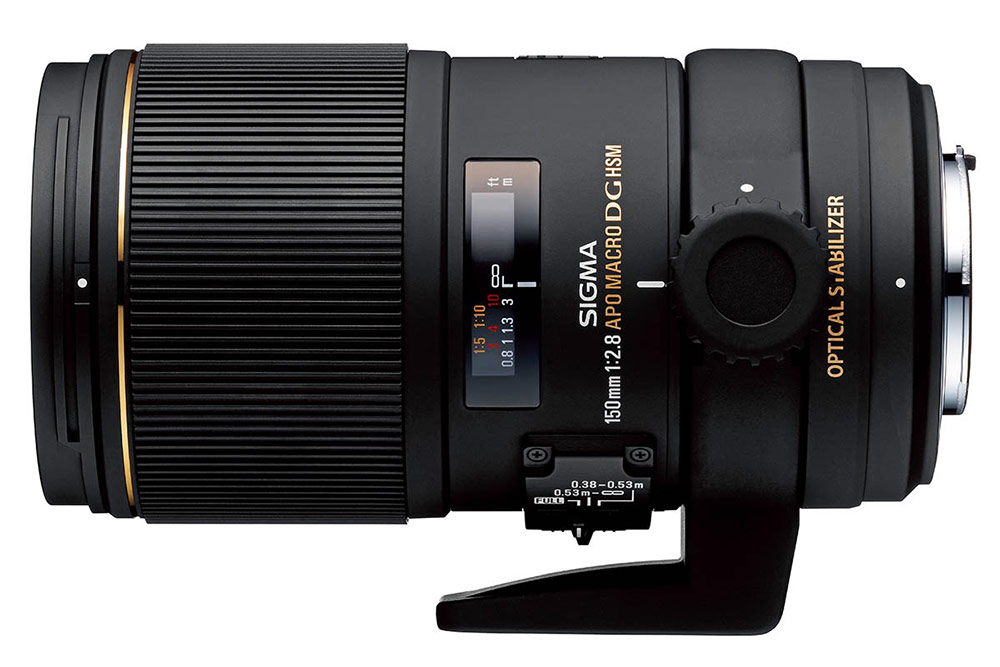
Sigma 150mm f/2.8 EX DG OS HSM Macro
At a glance:
- Mount: Sigma SA, Nikon F, Canon EF, Sony A
- Max magnification: 1x
- Minimum focus distance: 38cm
- Weight: 1,150g
- Second-hand price: £369 / $424
Featuring a Hyper Sonic Motor (HSM) for focusing, the Sigma 150mm f/2.8 EX DG OS HSM Macro is constructed from 19 elements in 13 groups and with three SLD (Special Low Dispersion) elements. It gives 1:1 reproduction at its minimum focus distance, which is 38cm. That means it’s fairly easy to avoid casting a shadow on your subject and there’s plenty of room to squeeze in additional lighting kit.
The combination of the long focal length and large maximum aperture (f/2.8) means that backgrounds can be blurred very effectively but the aperture can be closed to f/22 for greater depth of field. At 150mm in length, the lens is reasonably compact for its focal length and it weighs 1,150g. It was originally supplied with a lens collar and it’s worth checking that this is present when buying second-hand.
Pros:
- Excellent image quality
- Large f/2.8 aperture
- Useful working distance
Cons:
- On the heavier side
- May not come with collar
Sony FE 90mm f/2.8 Macro G OSS
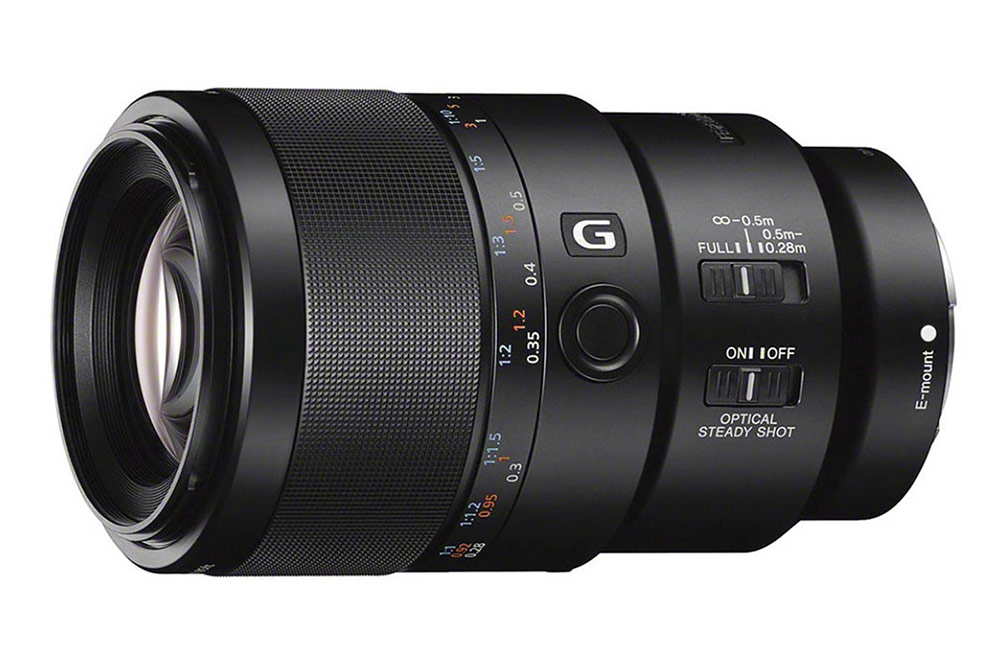
Sony FE 90mm f/2.8 Macro G OSS
At a glance:
- Mount: Sony E
- Max magnification: 1x
- Minimum focus distance: 28cm
- Weight: 602g
- Second-hand price: £654 / $877
Dating from 2015, the Sony FE 90mm f/2.8 Macro G OSS was the first true macro lens that Sony announced for its E-mount mirrorless cameras and it remains in the company’s line-up alongside the FE 50mm f/2.8 Macro. Like the 50mm lens, the FE 90mm f/2.8 Macro G OSS is capable of 1:1 reproduction at its closest focus distance – 28cm.
As the focusing mechanism is internal, the lens doesn’t change length and the front element doesn’t rotate, plus there’s a focus limiter switch to set the focus range to full, infinity to 50cm, or 50cm to 28cm. While the focusing is quiet, it’s prone to hunting when the subject is close, but you can switch to manual focusing by pulling the focus ring back towards the camera. However you focus, the results are impressively sharp.
Pros:
- Completely internal focusing mechanism
- Very good sharpness
Cons:
- Focus system can struggle at close distances
For more great E-Mount lenses, check out our guide to the best Sony E-Mount lenses.
Tamron SP 90mm f/2.8 Di Macro
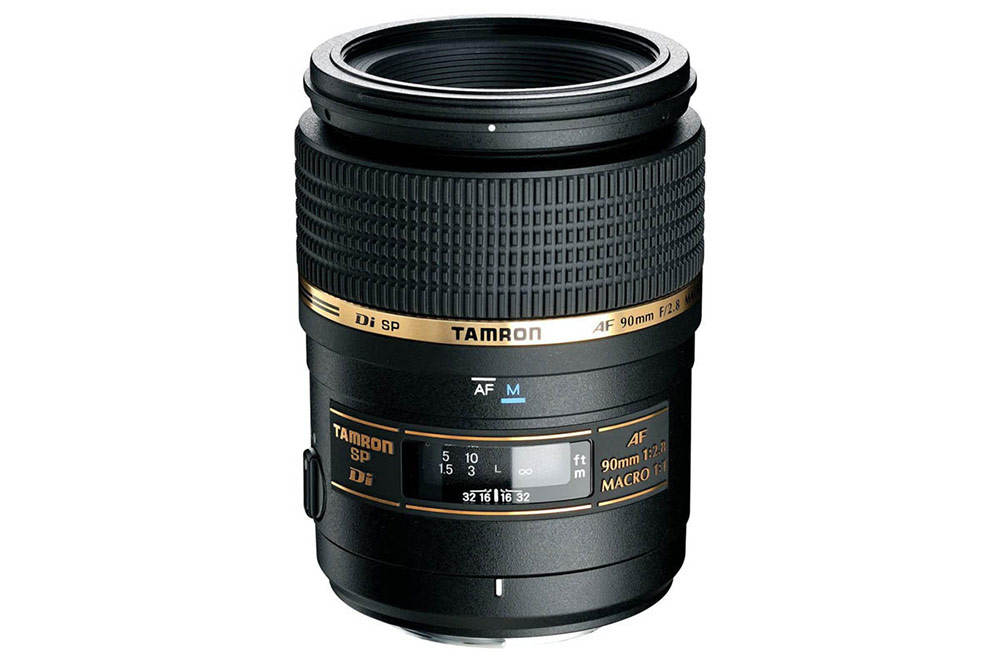
Tamron SP 90mm f/2.8 Di Macro
At a glance:
- Mount: Canon EF, Nikon F, Pentax K, Sony A
- Max magnification: 1x
- Minimum focus distance: 30cm
- Weight: 610g
- Second-hand price: £154 / $343
Thanks to a winning combination of great image quality, relatively compact size, weather-sealing and an attractive price, the Tamron SP 90mm f/2.8 Di Macro has been incredibly popular over the years. That means there are plenty of examples available on the second-hand market today and it can usually be found in Canon EF, Nikon F, Pentax K and Sony A mount. As a true macro lens it gives life-size reproduction at its minimum focus distance of 30cm, but it extends during focusing.
If you have extra cash to spend, you could also consider the more recent Tamron SP 90mm f/2.8 Di VC USD Macro (£334) which adds internal Ultrasonic Silent Drive focusing (so the lens doesn’t extend) and image stabilisation along with upgraded optics and modern coatings.
Pros:
- Plentifully available
- Very good value
- Reliable quality
Cons:
- Extends while focusing
Tokina atx-i 100mm f/2.8 FF Macro
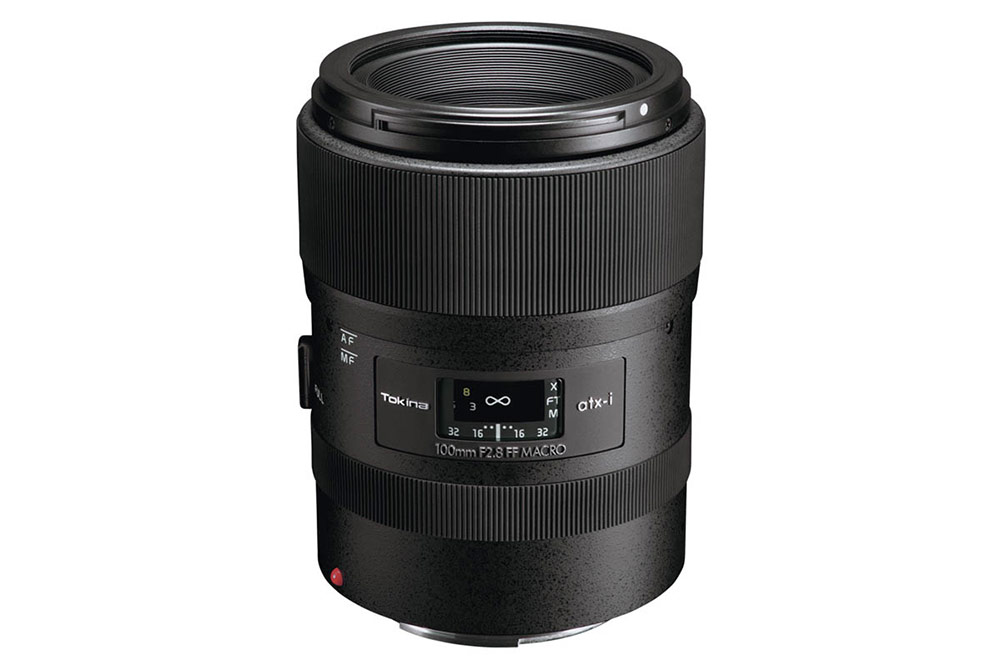
Tokina atx-i 100mm f/2.8 FF Macro
At a glance:
- Mount: Canon EF, Nikon F
- Max magnification: 1x
- Minimum focus distance: 30cm
- Weight: 490g
- Second-hand price: £334 / $349
Tokina still makes the full-frame atx-i 100mm f/2.8 FF Macro and it’s available with the Canon EF or Nikon F mount. That means it can also be used on APS-C format cameras from those brands, on which it has an equivalent focal length of 160mm or 150mm respectively. This lens offers a 1:1 magnification ratio at its closest focusing distance of 30cm and features a focus limiter switch that enables it to be restricted to focusing in the macro range or given free rein to focus between infinity and 30cm.
The Nikon F mount version has an aperture ring to enable it to be used with older cameras and both mounts have a push-pull focus clutch for swapping between autofocus and manual focusing.
Pros:
- Good quality for the money
- Precise focusing system
Cons:
- Not weather-sealed
- Extends during focusing
Text by Angela Nicholson, with contributions from Jon Stapley.
Related articles:
If you’re looking for a macro lens for your full-frame mirrorless camera, specifically RF-Mount and Z-Mount, then you’ll most likely need to look for new lenses, so have a look at our guide to the best (new) macro lenses available now.
Now that you’ve found the best second-hand macro lenses, you might want to find a camera to go with it – have a look at our buying guides: best second-hand full-frame cameras, best mirrorless cameras, and more.

